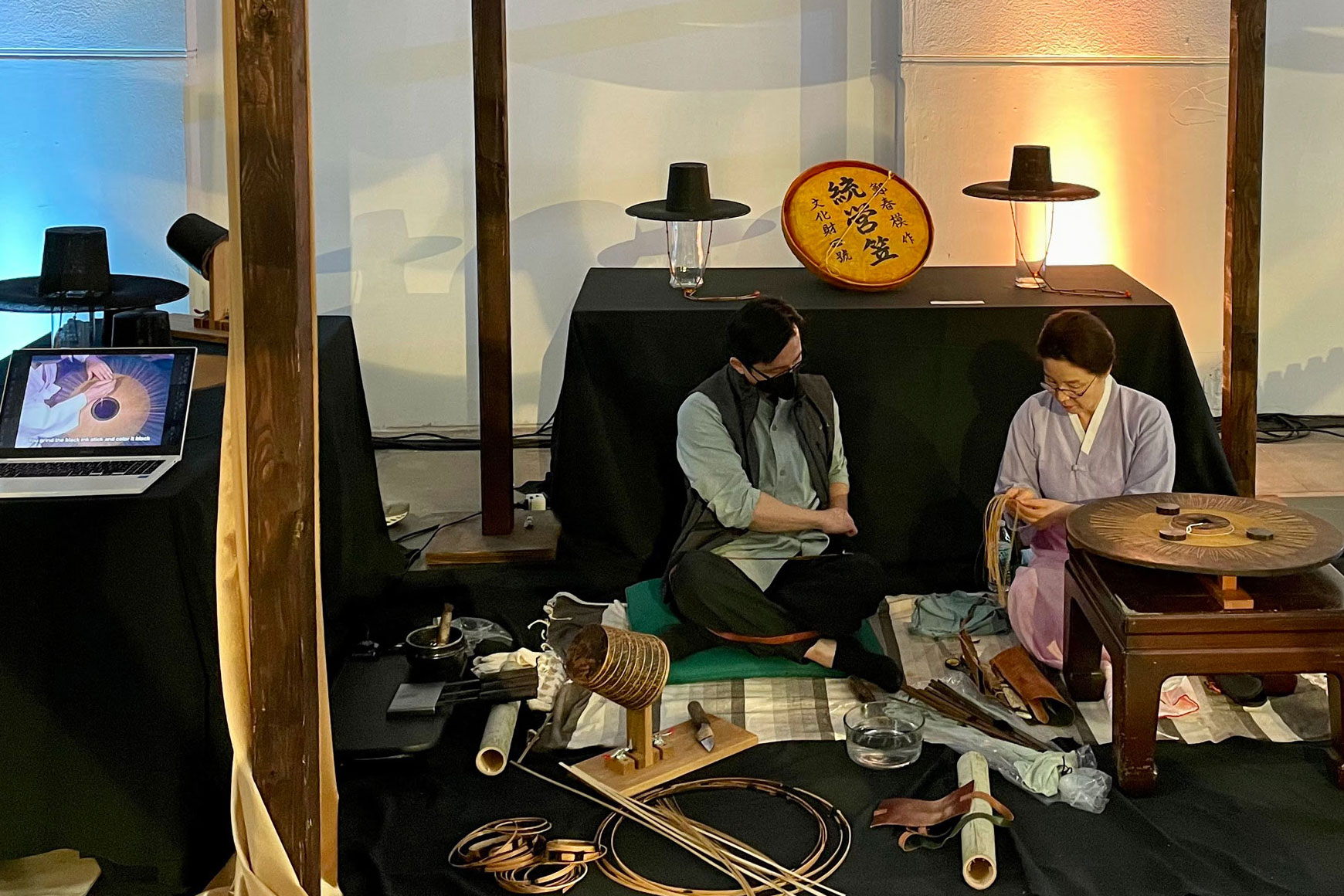In May 2023, the Smithsonian Center for Folklife and Cultural Heritage launched a new partnership with the National Museum of Asian Art to collaborate on a year-long artisan in residence program.
Drawing on the Center’s work on the Smithsonian Artisan Initiative and the Smithsonian Folklife Festival, we will assist the museum with identifying artisans and designing public programs. Throughout the year, this collaboration will bring artisans from across Asia and the diaspora to Washington, D.C., to lead dynamic activities for museum audiences that highlight their craft and culture, and create exchange opportunities for the artisans to share and learn with the D.C. cultural community. Each residency will be different, curated by the artisan and showcasing different craft practices.
“Our partnership provides a great opportunity to highlight artisans, their craft, and their stories in a personal way through programming at the museum,” says Sloane Keller, Cultural Industries project manager at the Center. “We’re so pleased we can work together to strengthen our relationships, communities, and ties to the work we do.”
To kick off the partnership, artisan Han Soo Jung and his mother, Gook Hee Do, led public programming on gannil (traditional horsehair hat making) during the museum’s Centennial Celebration in May. The artisans were joined by Min Jung Kim, a past research fellow at the Center and a program specialist at ICHCAP (UNESCO’s Information and Networking Center for Intangible Cultural Heritage in the Asia Pacific Region). Between May 10 and 14, Han Soo led an artisan talk, workshop, and a demonstration day. Han Soo’s father, Choon Mo Jung, participated in the 1982 Folklife Festival and passed down this craft to his son.
“I was so proud as a Korean that Korean culture could be introduced to the 100 Centennial Celebration,” Han Soo said, as translated by Min Jung Kim. “It was amazing to see the footsteps of my father and teacher who participated in the Folklife Festival about forty years ago. I had a meaningful and unforgettable experience with warm hospitality and people’s interest.”
About the National Museum of Asian Art
Established a century ago, the National Museum of Asian Art is the Smithsonian’s first art museum. Committed to preserving, exhibiting, researching, and interpreting art in ways that deepen our collective understanding of Asia and the world, the museum stewards one of North America’s largest and most comprehensive collections of Asian art. Its rich holdings bring the arts of Asia into direct dialogue with an important collection of nineteenth- and early twentieth-century American works, providing an essential platform for creative collaboration and cultural exchange between the United States, Asia, and the Middle East.
About the Cultural Vitality Program
The Center for Folklife and Cultural Heritage’s Cultural Vitality Program works with communities to bolster efforts to preserve and practice living cultural heritage in the face of social, economic, and political challenges. Through its work, the program works to understand and mitigate threats to cultural sustainability, scale our impact through partnerships, convenings, and thought leadership, and transform public understanding of cultural diversity.


